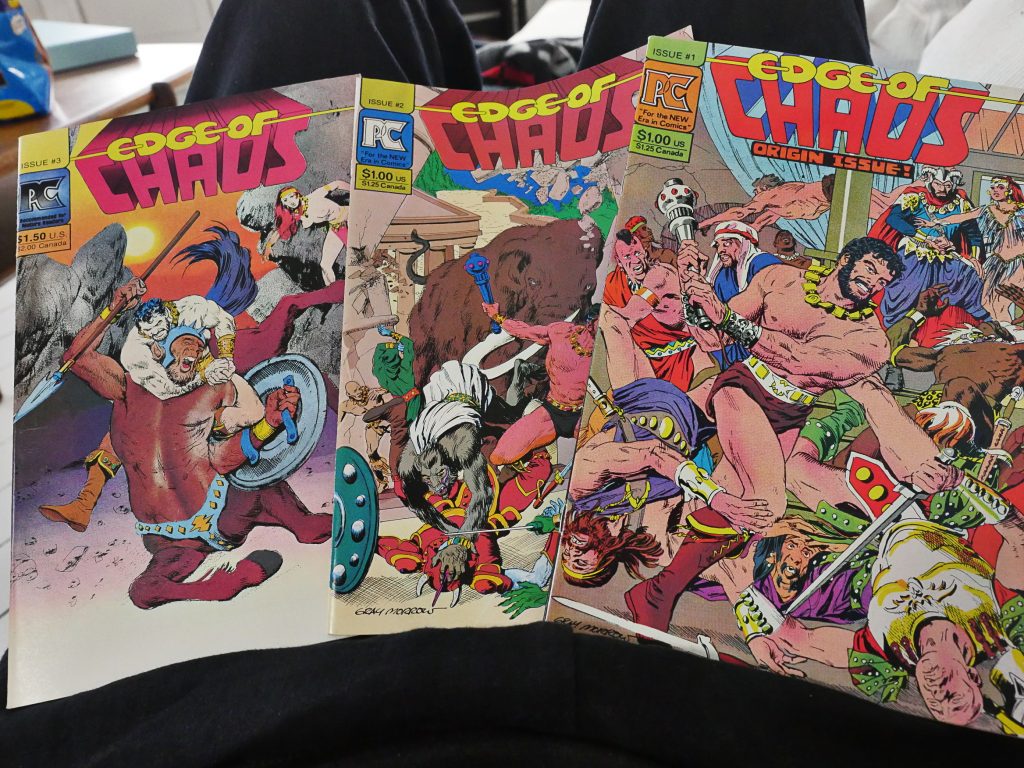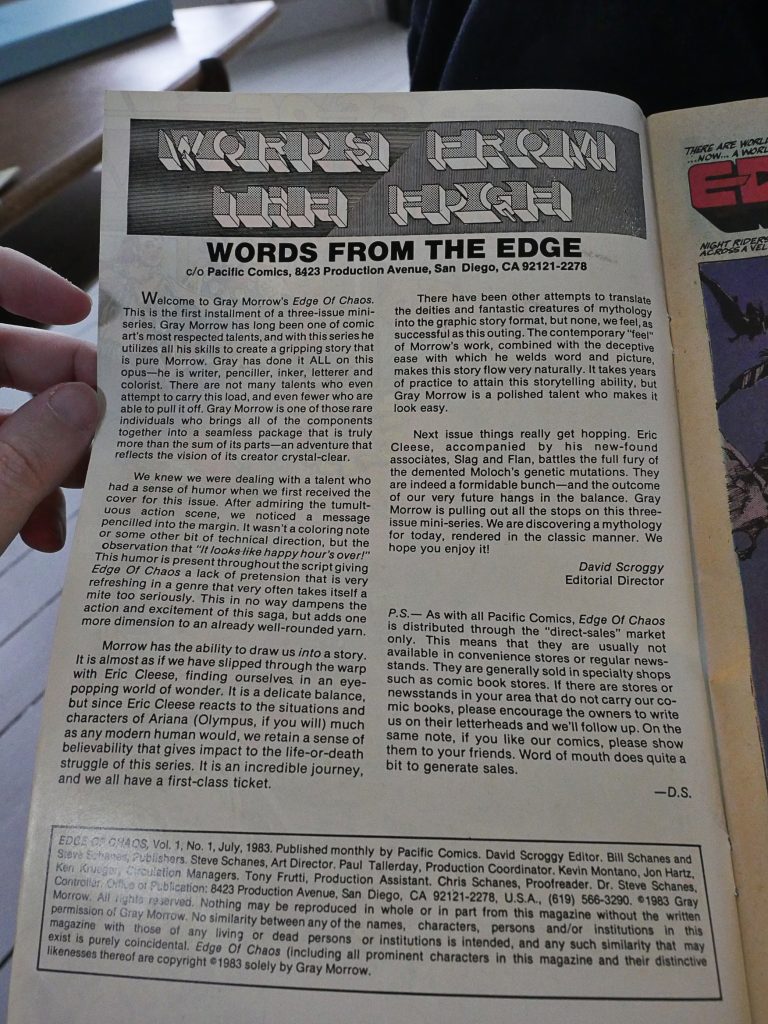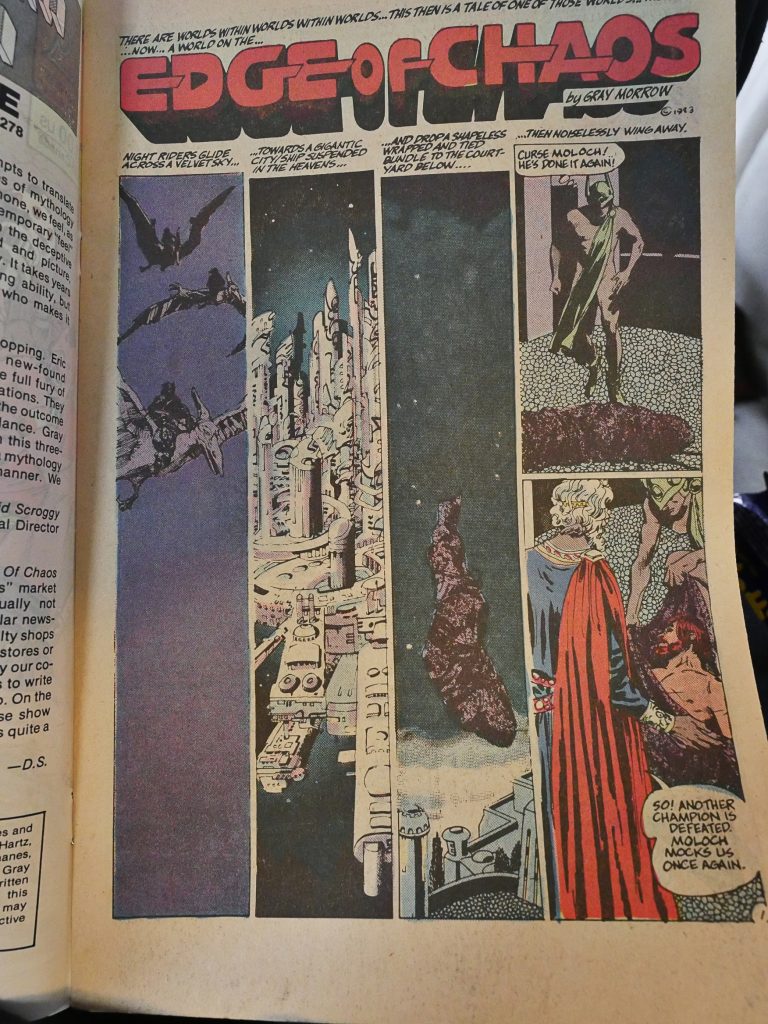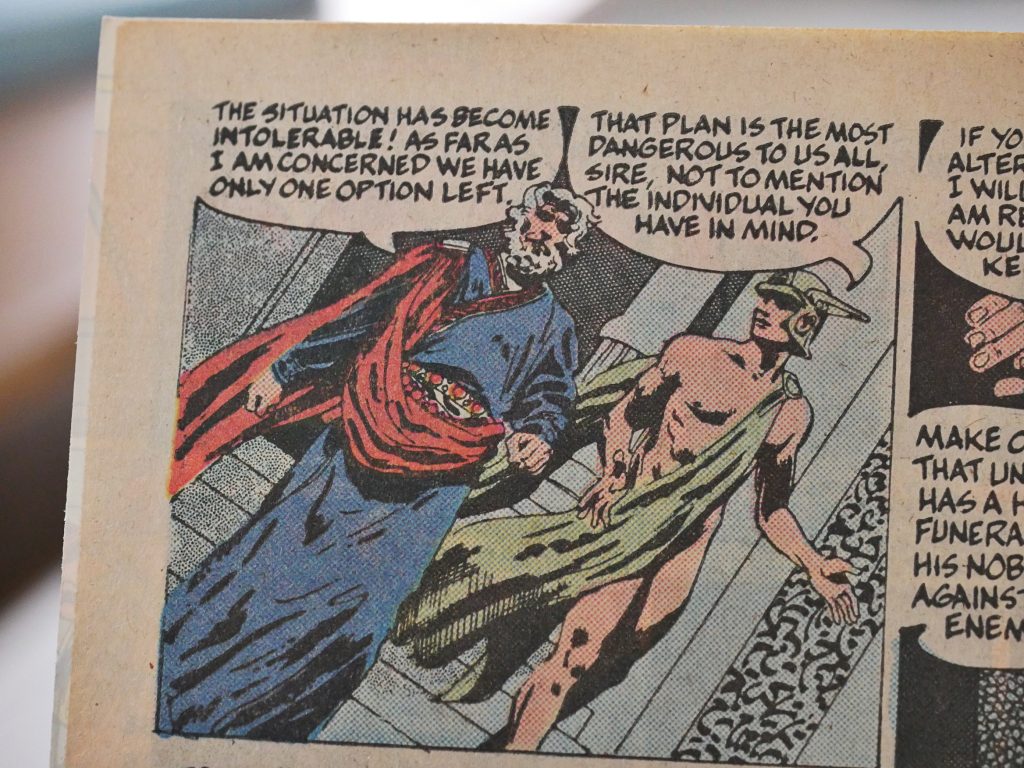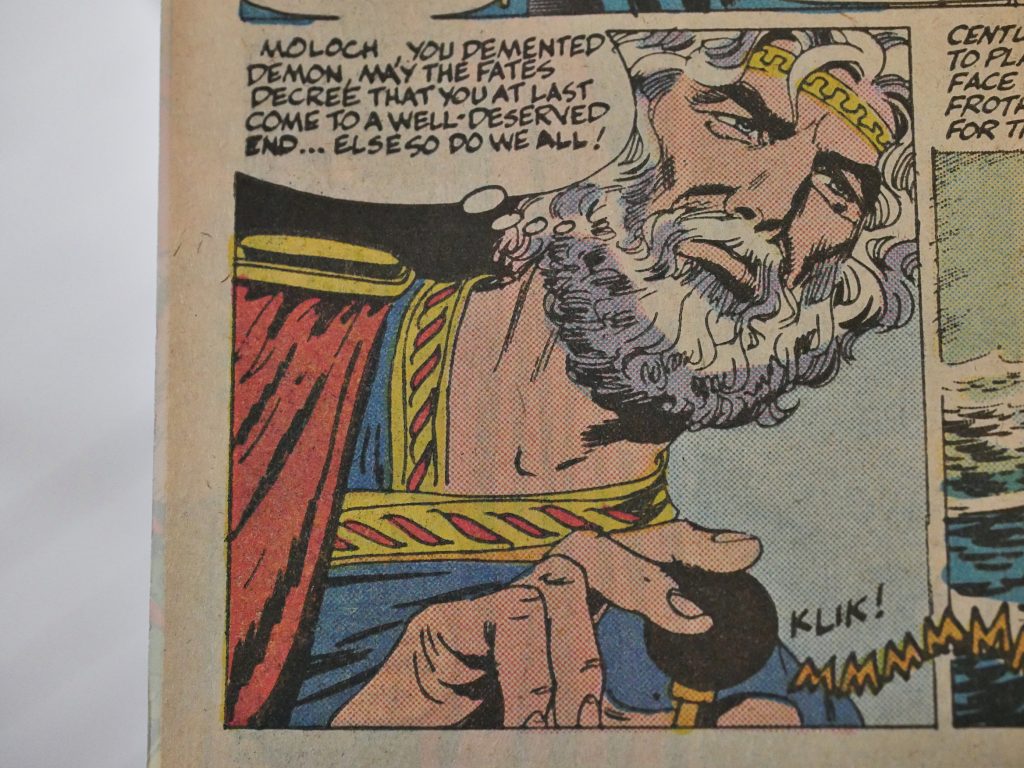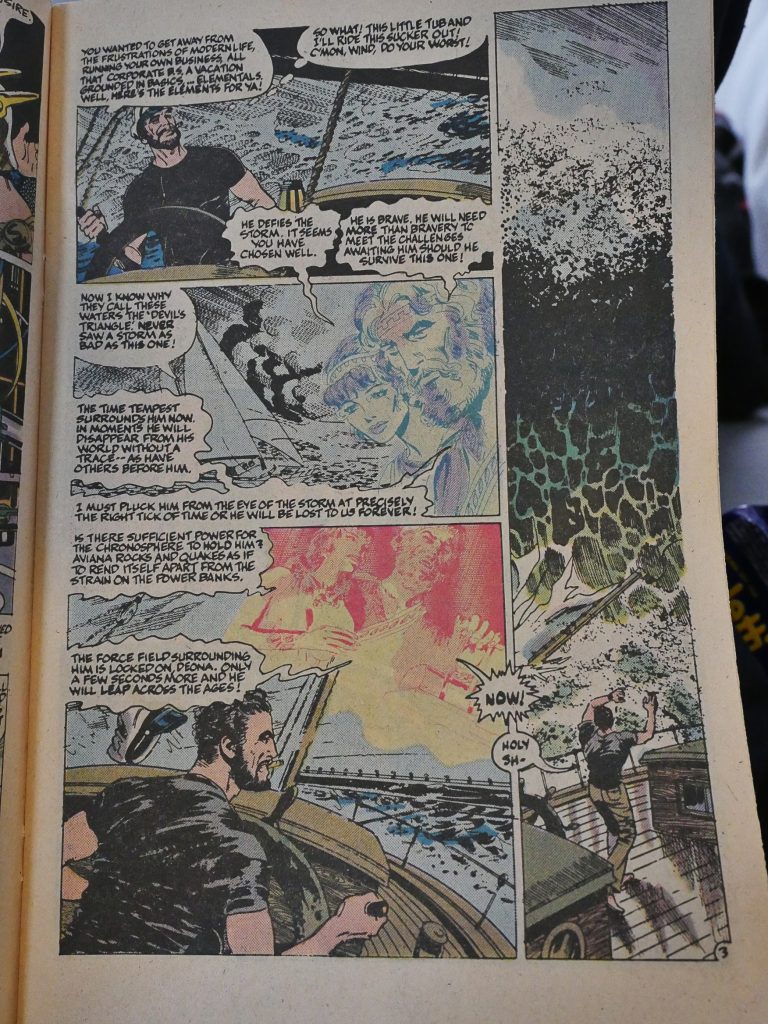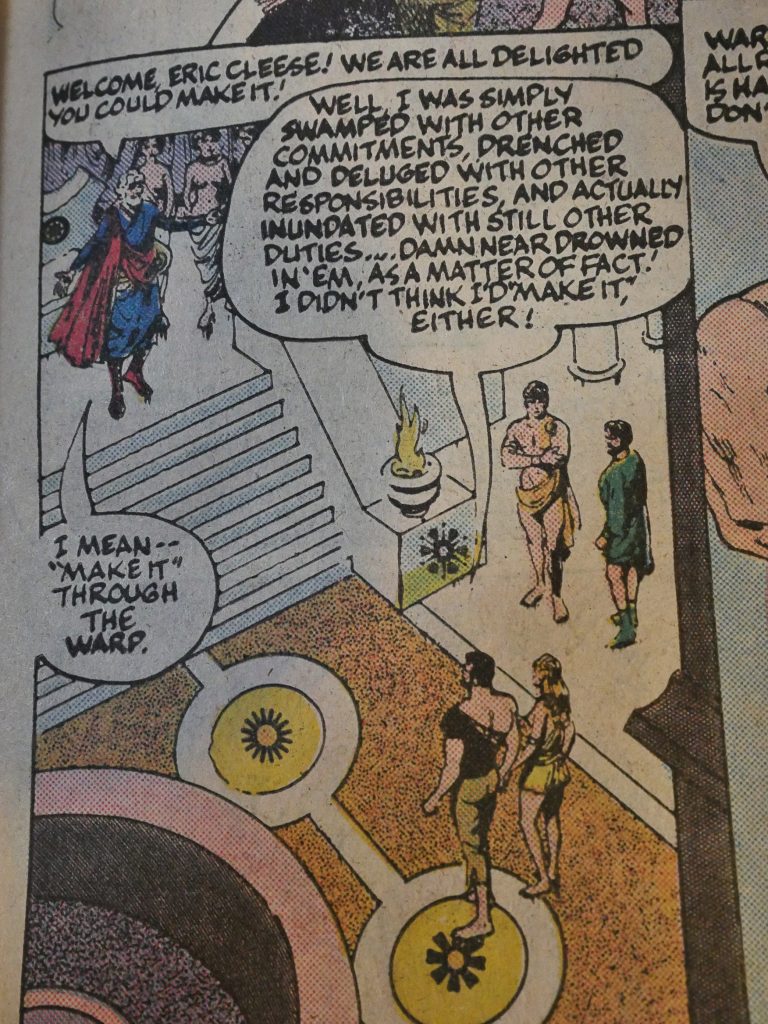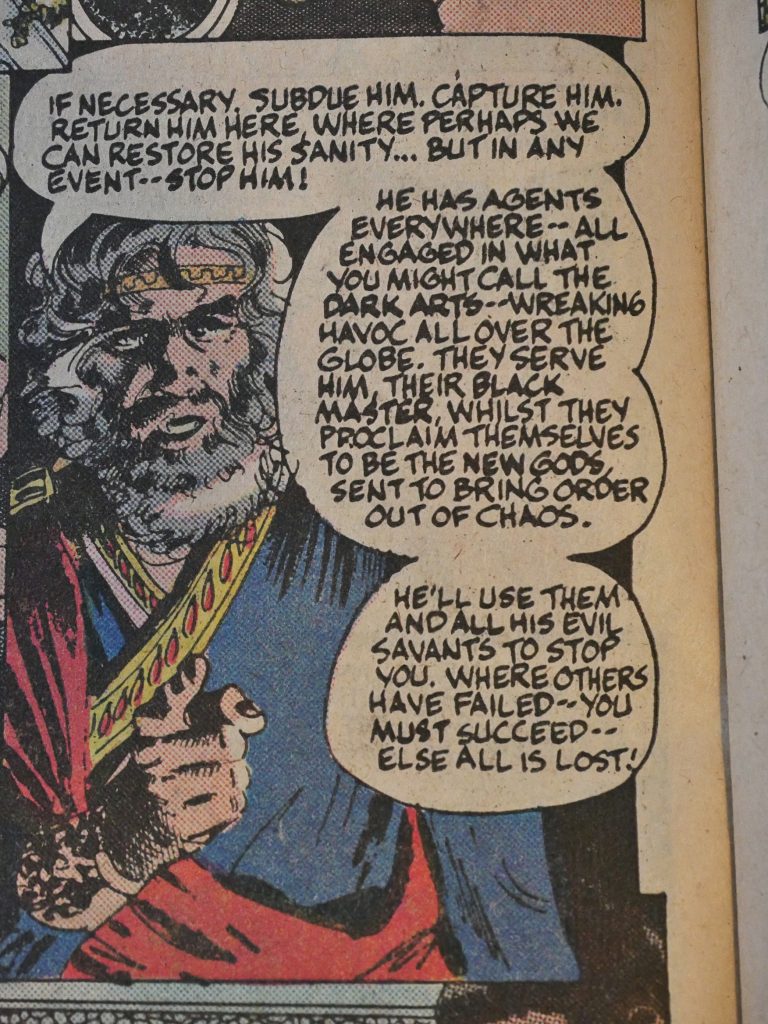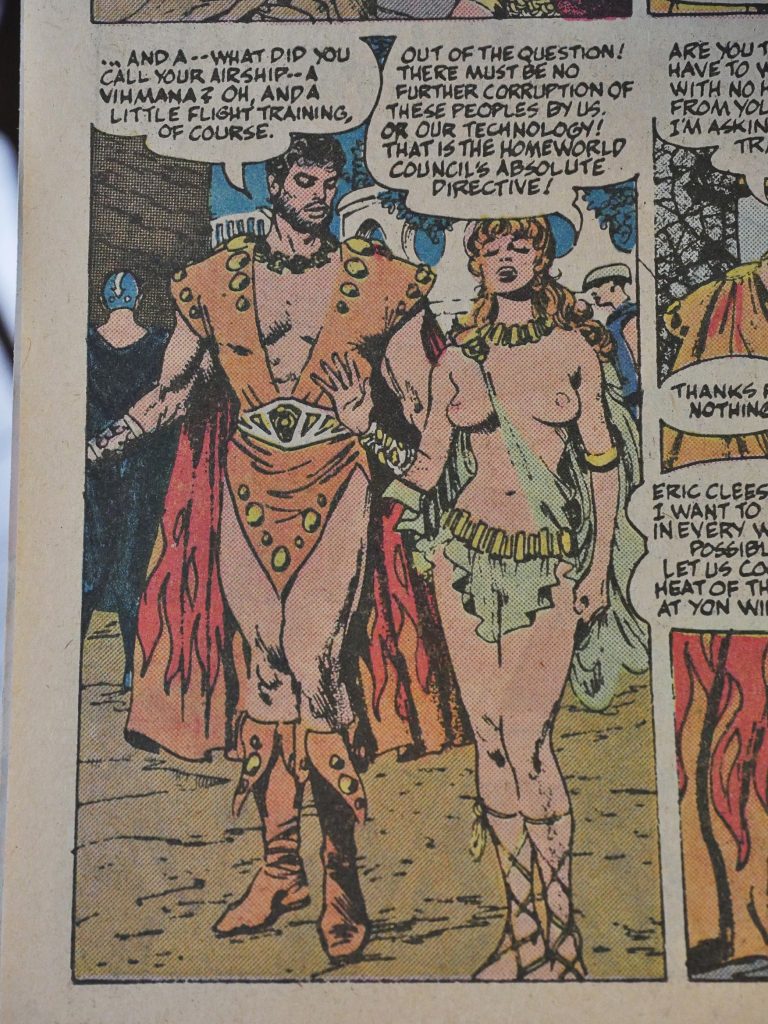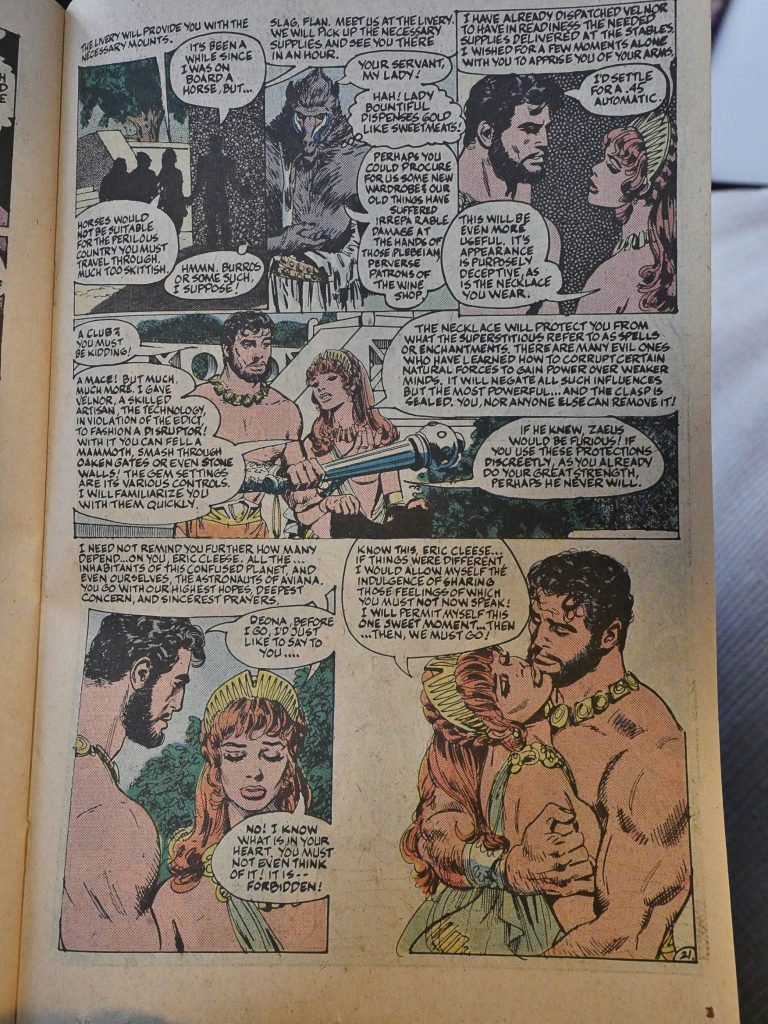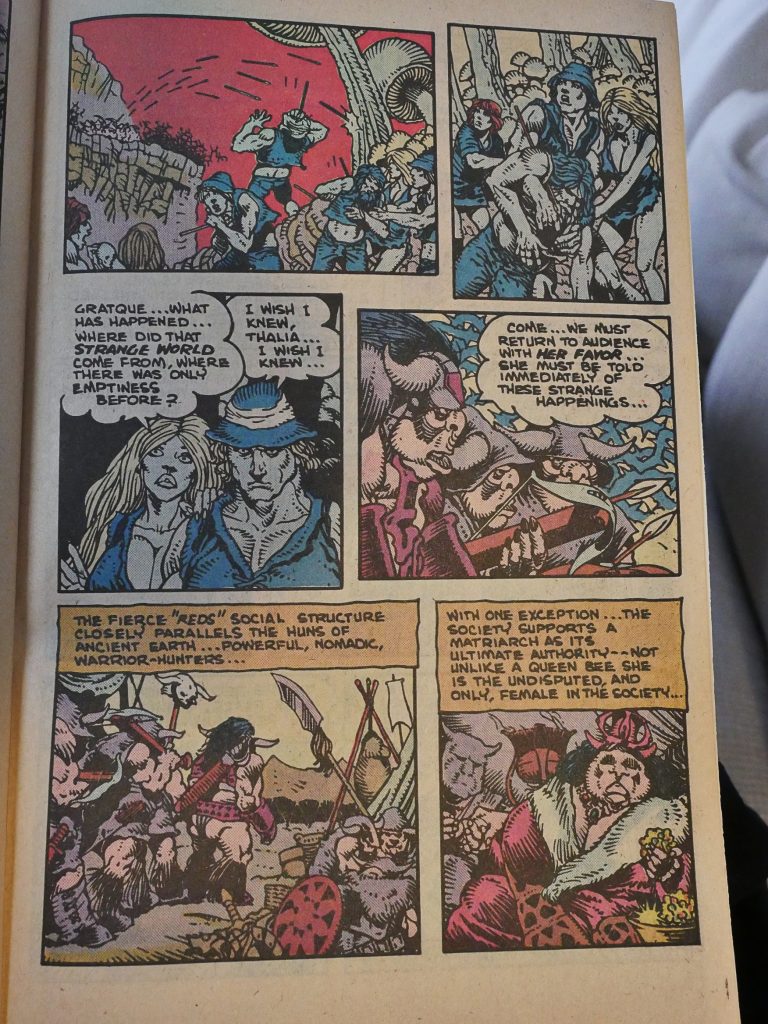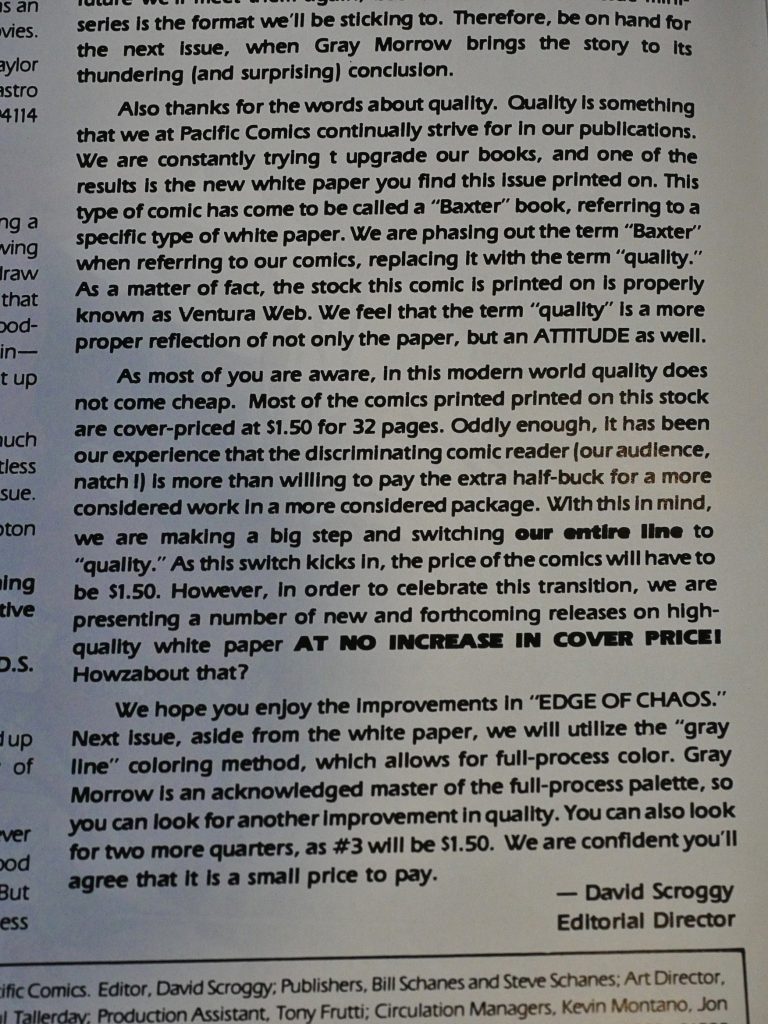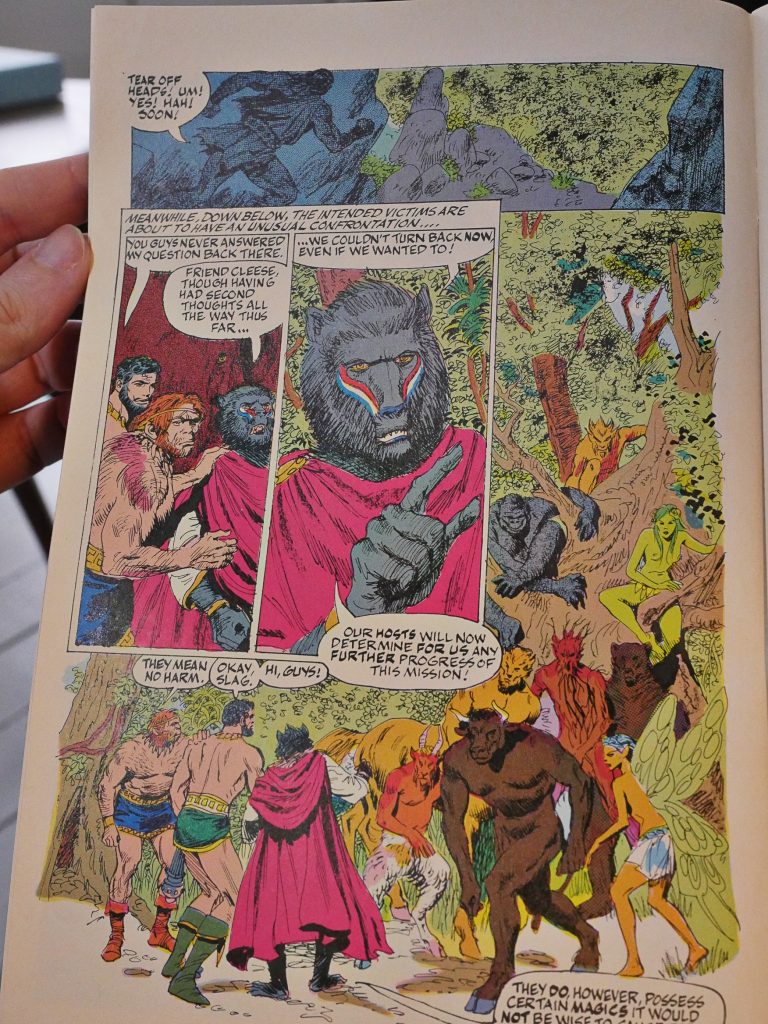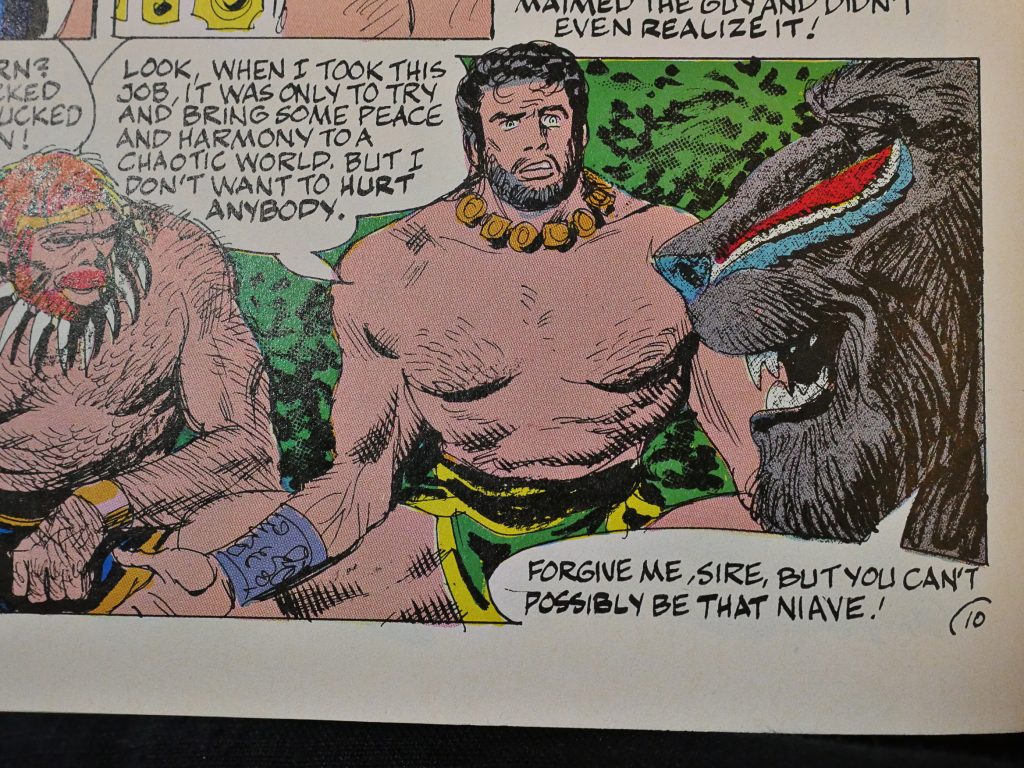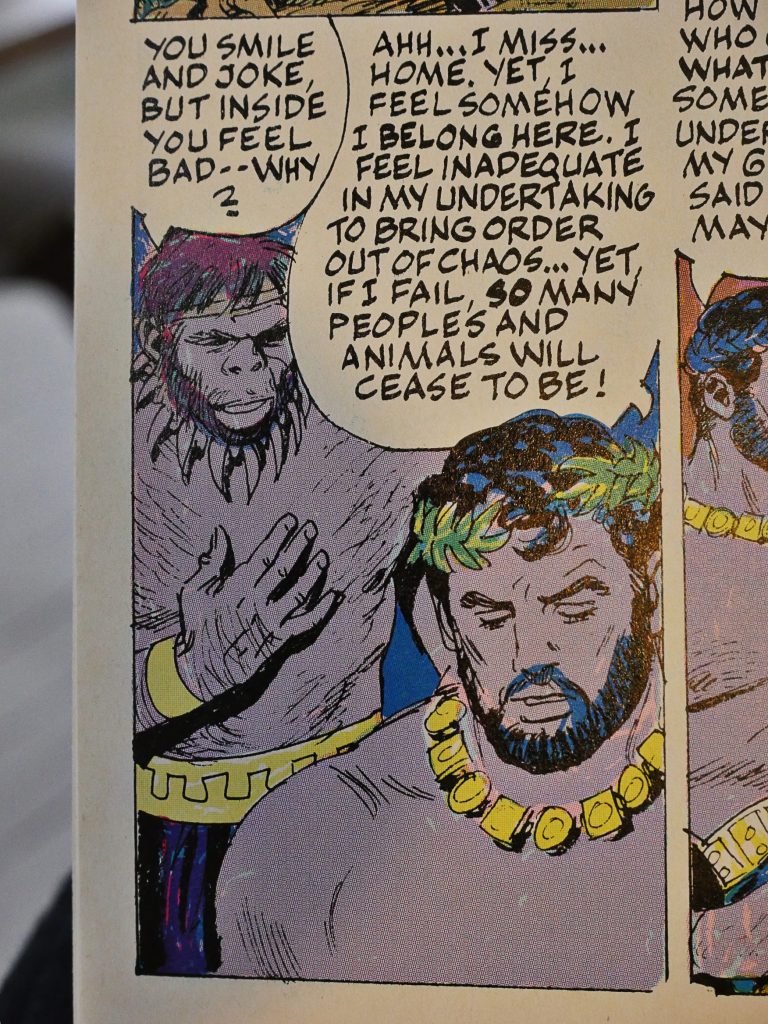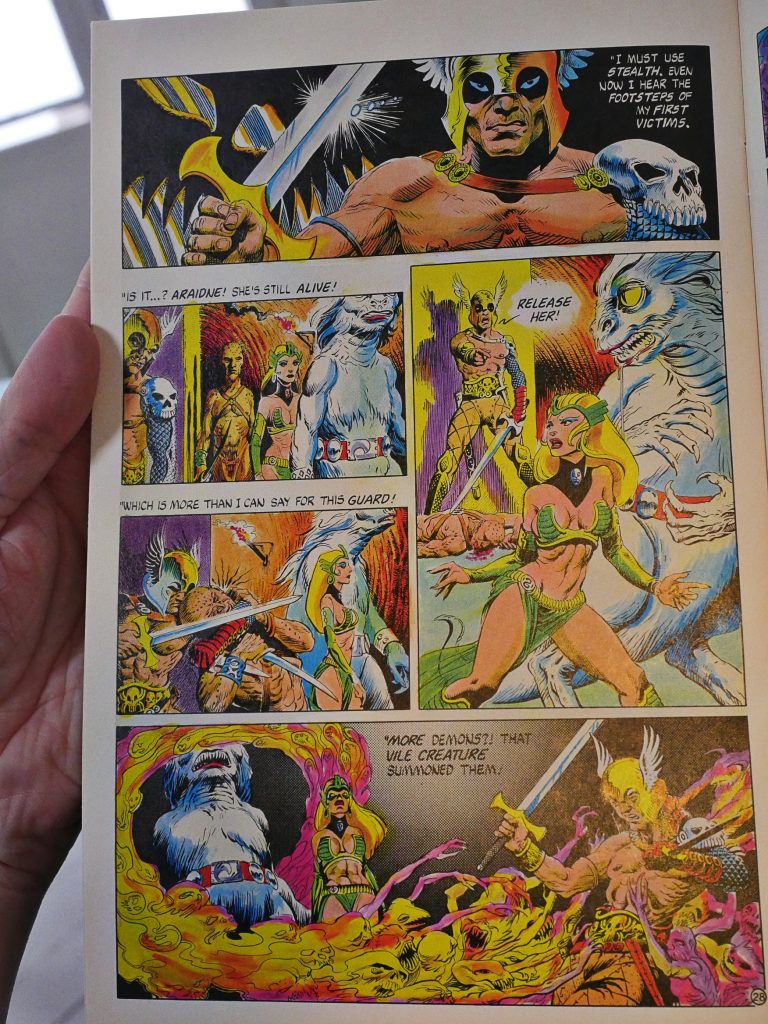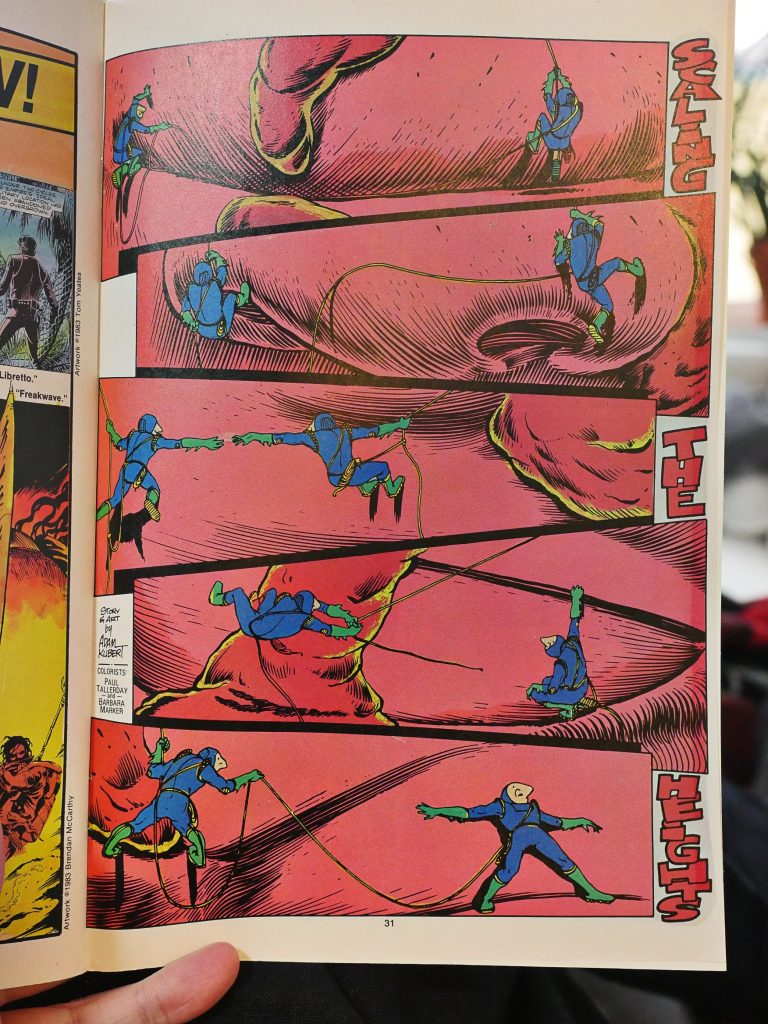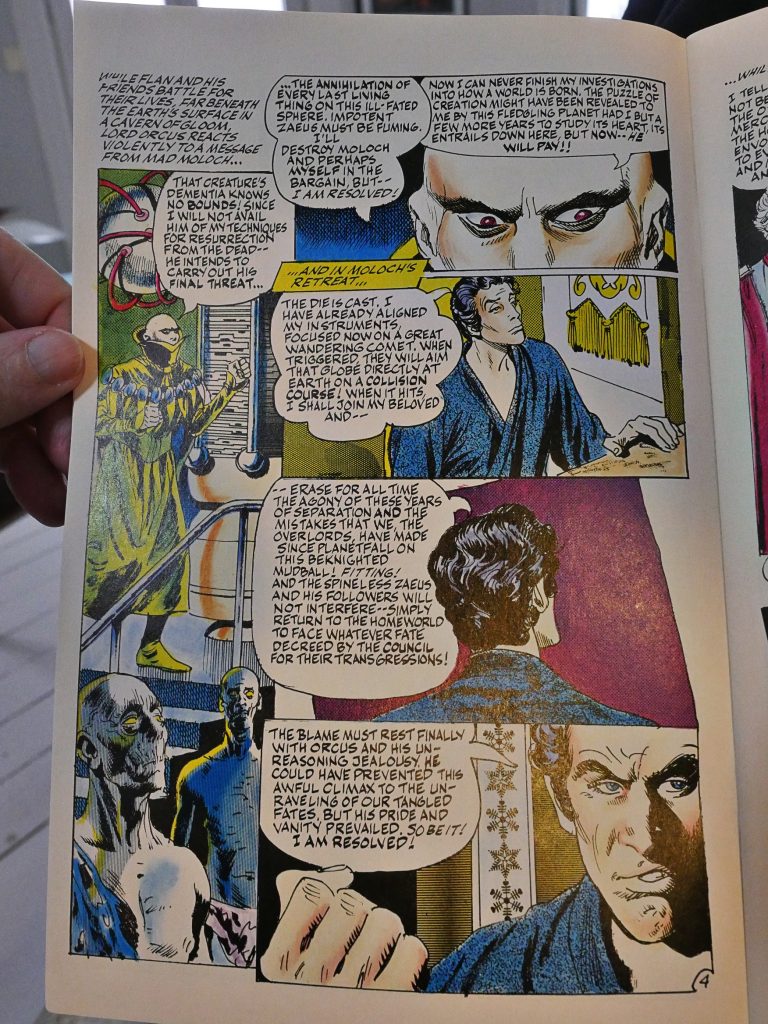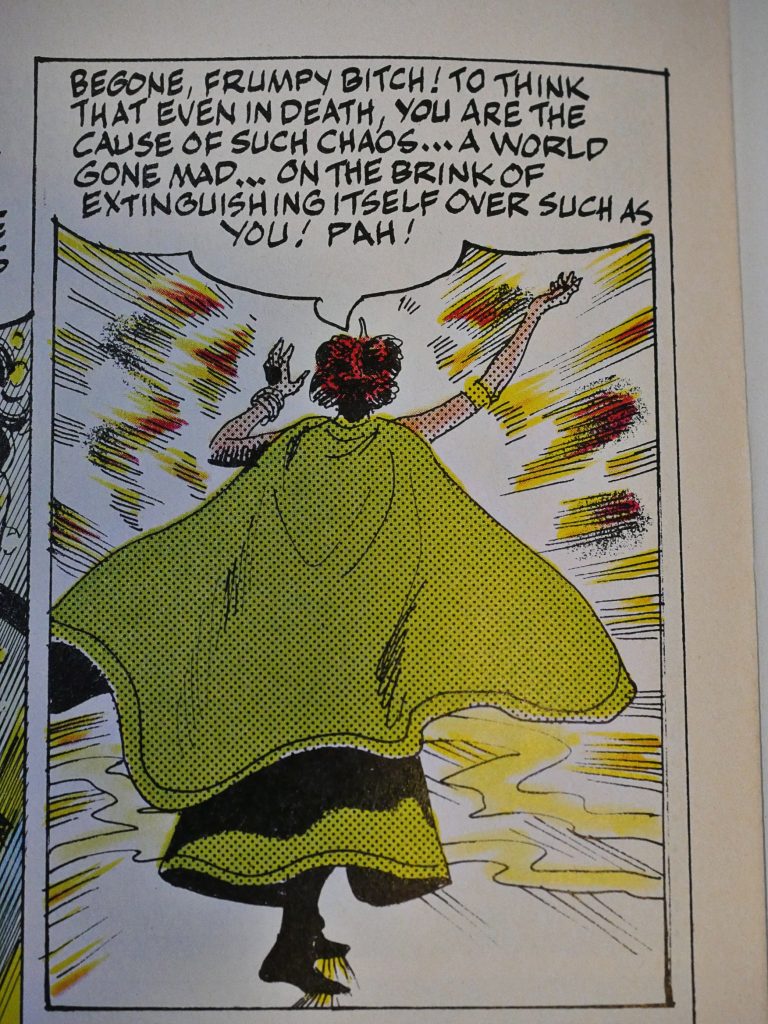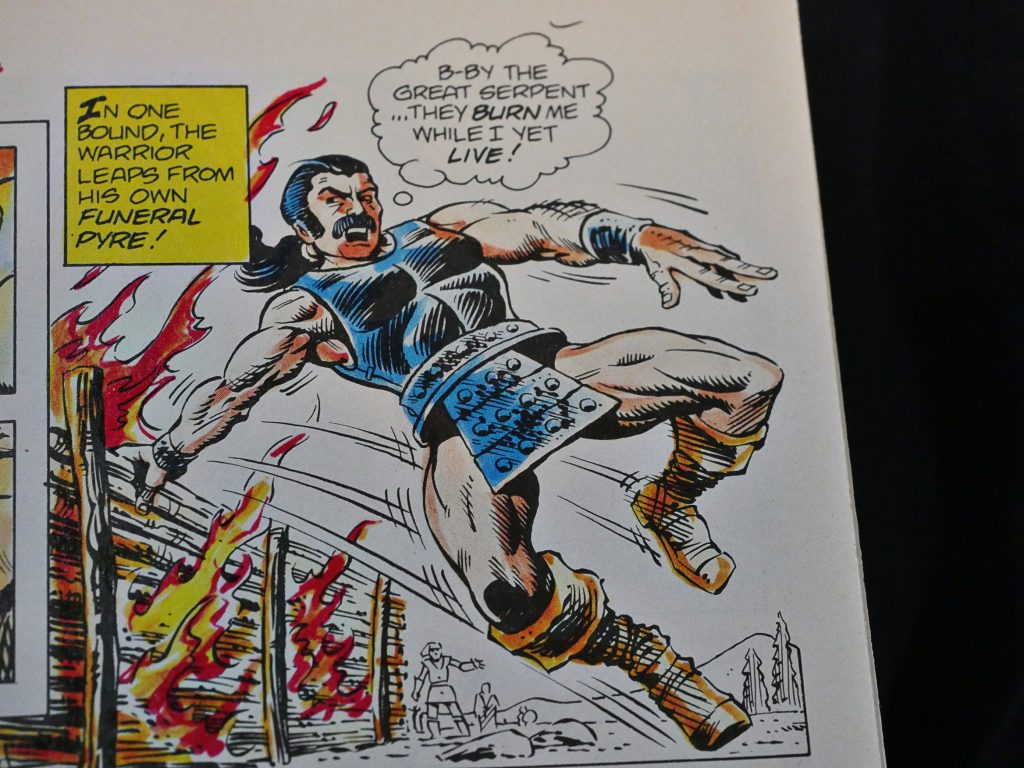Edge of Chaos (1983) #1-3
I think I had somehow bought only the second issue of this back when I was a teenager, and that hadn’t inspired me to get the other two issues, so if I’m to rely on my judgement from back then, I’m in for some not-very-inspiring reading here…
But that moron has been wrong before, so let’s see.
As has become a pattern with Pacific comics, Morrow is mainly known as an artist, but here he’s doing the writing, too. And the lettering and the colouring, so this is his auteur moment.
And it’s a sci-fi thing with a somewhat 70s look. Which is OK by me, but unfortunately Pacific is printing this on newsprint. Or perhaps it’s “mando” paper that just has gone all yellow over the years. In any case, the muddiness this brings to the artwork is unfortunate.
I thought Pacific had decided to go “baxter” white paper on all their comics by now, but apparently now.
That’s a very drafty costume design!
Oy vey. That may be the least thought-like thought balloon I’ve ever seen.
When an artist frees themselves from the shackles of having a writer tell them what to draw, you’d think they’d cut back on the text and let the artwork shine. But, no: It seems like many (most?) of these mainstream-ish artists ladle on the text without thought for readability.
I wonder whether this is the result of just how long it takes to draw something. The artist is sitting there drawing all those itsy bitsy clothing details and thinking up bon mots that they’d be putting into the panels if it weren’t for those nasty writers deciding what the text is going to be. And the writers just want to do the least work possible (everybody’s lazy, right?) so they don’t see overwriting as a virtue. (Except all the ones that prove the rule, right?) (And real writer-artists usually don’t have this problem, for some reason.)
So here the protagonist delivers that long speech filled with puns based on him being picked up from a boat in a storm, so you get swamped, drenched, deluged, inundated, drowned…
Is it amusing? Well, it’s not hilarious.
The plot isn’t more eye-roll inducing than most of these things are: It turns out that the Olympian gods are really space-faring aliens, and they have a time machine, but they’re not allowed to interfere for some reason, so they choose that wet guy as their champion, pinning all their hopes of being allowed to return to their home planet on a single human. Pretty standard stuff, and it doesn’t really make much sense.
No further collusion! I mean corruption!
On the other hand, perhaps laziness is the reason for all this verbiage. If you cover up most of the page with speech, you don’t have to drag as much.
All three issues have 8-ish page back-up features, which is a thing Pacific does in almost all their comics. This one is by Lomax (I think that’s what it says) and is probably the best of them all. It’s a hippyish O Henry underground thing with an intriguing art style.
David Scroggy announces that all Pacific comics will go to white paper, which they’ll call “quality” from now on and not “Baxter”; especially since they’re using Ventura Web paper.
This make things a whole less muddy, but the colouring was obviously done before the decision to change paper stock was made, so everything is super-garish.
And Morrow seems to have gotten lazy with his artwork. While the first issue had pretty nice figure work and pleasing rendering, this one is all over the place. Heracles, I mean Eric Cleese, for instance, looks positively bizarre in some of these panels instead of looking heroic.
Everything is kinda sloppy, including the colouring.
T. Burgard does a twist ending heroic thing. Exactly the same joke had been done a gazillion times before, though.
You can’t say that about Adam Kubert’s two-page thing… and that’s a good thing.
It’s nice that the evil guys does a recap for the readers, right? Right!?
“Frumpy bitch”. Now, is that nice!
Anyway, this was planned as a three issue series, and that also seems to be a recurring theme with these Pacific comics: Most of them seem to be planned as a set number of issues, which was rather unusual at the time. Some of them continued after the initial run was over (like Captain Victory), though.
This series has a real ending, but the entire thing is tedious and nonsensical.
Rex Lindsay does the final back-up thing, and it’s terrible.
But what did the critics think?
R A Jones writes in Amazing Heroes #44, page 60
Anyone who has read my
earlier reviews will know that I
am a big fan of Gray Morrow.
The man is a consummate craft-
sman who injects life into every
panel he illustrates. I admire his
talents as an artist tremendous-
lyeI am not so enamored of his
writing abilities. Edge of Chaos
has employed just about every
cliche in the book.[…]
Despite the severely flawed
story, I am still going to recom-
mend that you buy the book, for
the simple reason that Morrow’s
art alone is worth the price of the
book. He has an excellent eye
for detail and perspective. His
characters are individuals with
distinct physical characteristics
and he draws some of the loveli-
est ladies you’ll ever see in comics.
On the other hand:
Larry Rodman writes in The Comics Journal #200, page 55
GRAY MORROWS 1983 MINI-SERIES EDGE
of Chaos is an epic post-modern tossed
salad; part Saturday matinee mythology,
science fiction logic, and a touch of the
Hitchcockian theme of the ordinary guy
thrust into extraordinary circumstances.[…]
There is a breezi-
ness and immediacy to his style, and his
characters display the breath of life.
Active commercially since the pulps,
with a career spanning magazine, adver-
tising, and work for virtually every comics
publisher in the American market— what
can I say? Morrow rules! A solo book from
him is a treat![…]
Edge of Chaos also demon-
strates that playing with con-
ceptS Of heroism is a work-
able approach, in contrast to
a literal tone of hero wor-
ship. At this late date, we are
sort of disengaged from the
willing suspension of disbe-
lief that schlock epics require
of us, yet the fundamental
desire for mythic personali-
ties and conflict writ large is
unsuppressible and very
much intact.


